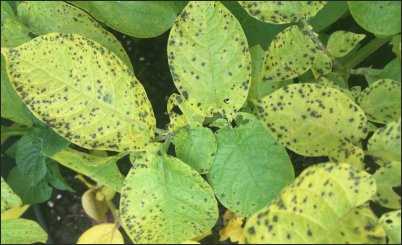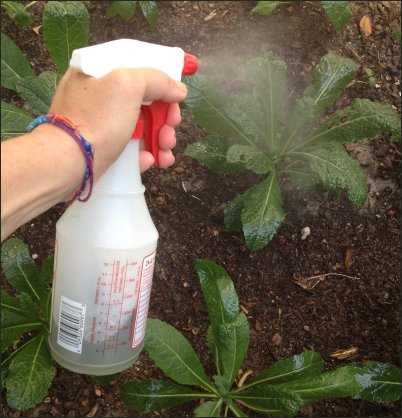The harvest season will soon be upon us. Our summer produce will slow down and the canning and food-preservation process will be in full swing here at The Wildwood Homestead. I tend to experience a curious combination of emotions during this time of year. On one hand, I long for the respite of cool, brisk mornings and all the comforts of fall, like pumpkin bread and pie, and creamy, squash soups, warm cider sips, and cozy quilts out by the backyard bonfire. On the other hand, I experience a tinge of melancholy as the dog days of summer are winding down, the kids head back to school, the season wanes and darkness begins to creep in earlier and earlier with each passing day. Part of my woeful outlook is related to the fact that I put in an incredible amount of hard work over the spring and summer months only to standby and gaze ominously over my mess of a garden. My once-flourishing crops are now transitioning to a crispy, brown crunch and bowing down to the soil in preparation for a long winter’s rest. Unfortunately, the other crushing blow comes with the realization that someone has to clean all of this mess up. In case you haven’t already guessed, that “someone” happens to be me.
At any rate, with the winds of seasonal change on the horizon, we don’t necessarily have to hang up our hoes and head inside the house until Spring Break. Even gardeners in some of the more frigid climates around the country can rely on potatoes, chard, lettuce, and a variety of other cold-weather crops to elongate their growing season. One of the many perks of putting in a fall garden is the lack of biting insects and invasive pests that we are forced to contend with on a daily basis during the plentiful, warm weeks of summer. This is a welcome change for many of us who have been slathering on the bug sprays every day and going to bed with topical anti-itch cream every night for several long months now. Depending upon where you reside in the country, the horseflies and mosquitoes may linger a bit longer, but many of the insects that thrive and live to devour our summer crops have finally begun to dwindle.
But then there is the sustenance-sucking aphid. Aphids are survivors, and if there is food growing, they can survive pretty much anywhere. Cool, crisp nights and mornings are no test for these little invasive critters. Gardeners can find them happily continuing to draw the nutrients out of the leaves, stems and sometimes even the roots of their hopeful harvests right on through the fall season and into the cold months. As all garden-loving folks are well aware, putting in the time and effort to raise fresh fruits and veggies, only to witness them quickly become devoured by nature’s noshing creatures is quite a disappointment.
Believe it or not, there are 30 or more different species of aphids that exist on our lush green planet and all of them love to eat! Their bodies are soft and they can range in color from white and black to yellow, green, and even other variations, including pink and brown. They are typically wingless, although they have the ability to form wings if they have munched your garden to bits and suddenly find themselves running out of nutrients. Sprouting wings allows them to easily travel to other plants in the vicinity where they can begin the process of laying eggs and building a new colony. Again, they are survivors. They want nothing more than to remain well fed and well bred. They have mastered their survival technique here at our homestead and, most likely, if you are a gardener, you have seen their impact in your neck of the woods at one time or another as well. Several generations of aphids can work through our gardens each season, so it’s important to keep an eye out for them at the first sign of distress among our plants and fruit trees.
Aphids lay their eggs in the soil around the plants. This allows them to hatch in substantial numbers and then immediately begin consuming our homegrown delicacies, ultimately turning our aphid aggravations into full-on infestations. One of the most unfortunate issues surrounding the aphid’s arrival is that, often times, an infestation can be taking place right under our noses long before we ever notice even the first sign of their presence. Many times, they are utilizing our soil as a nursery and our garden goods as a smorgasbord for weeks before the crops begin to visibly suffer. The tricky characteristic about aphids is that they do not chew away at the leaves or the stalks of our plants like other insects. Because they suck their nutrients, we may not notice the indentations on the backs of the leaves unless we are closely inspecting our plants on a daily basis.

I don’t know about all of you, but I certainly don’t have the time necessary to crawl around and turnover each leaf in my garden. Even if I did have that sort of time on my hands, I can’t fathom that I would choose to do such a thing. In most cases, folks realize they have an aphid infestation only after their plants are beginning to falter and become visibly weary. But even then, thankfully, it’s not entirely too late to salvage your garden.
If you notice that any of your plants seem to be suffering, don’t hesitate to snag your magnifying glass or even just your reading glasses and immediately begin your investigation. The best way to determine whether or not aphids are the culprit is to look closely at the back of the leaves. Almost always, you can spot the little critters in a group drawing out the nutrients from the leaves, blossoms, or stems of your plant.
Similar to a herd of cattle, the aphids move and work together. Even if you don’t physically see the aphids crawling around on your beloved blooms and greens, you can still use your super-sleuth skills to identify whether or not they are currently in existence or have been dining on your garden in recent days. Whether they have taken up residence on your fruit trees or in your vegetable garden, aphids always leave a tacky, telltale substance behind called “honeydew”. The sticky deposits leftover from the aphid excretion often attract ants, moths, and other insects. This is particularly disheartening for the gardener, as this gooey, yummy, enticing treat not only introduces the additional insects to the garden but also the potential for invasive disease. The arrival of new, hungry bugs and potential disease can obviously cause even more harm to your growing goodness, more work for you, and potentially less harvest for your family.
Fortunately, the honeydew stickiness can be felt with your fingertips. Gently run your fingers across the leaves and over the stems and stalks of your crops. Often times, you can feel the gooey substance before you can see the actual aphids.

The honeydew droplets not only attract other insects, but can also lead to a fungus known as “sooty mold” which can grow on the leaves of your plants, causing them to curl, turn yellowish in color and become speckled with black spots.
The sooty mold reduces photosynthesis and greatly increases the risk of your plants susceptibility to disease and wilt. Granted, the aphids don’t always kill your plants but in large numbers, they can do major damage, stunt the growth of your crops, cause fruits to be malformed, and, ultimately, hinder the overall success of your harvest.
The good news is that once you have completed your garden investigation and you finally confirm that the aphid is indeed the culprit, there’s an abundance of natural options out there to help you eliminate the pests quite quickly.

I highly recommend following the step-by-step homemade soap and pepper spray recipe I’ve shared below. It is a quick, simple and inexpensive treatment option. In my experience, it successfully eliminates aphids as well as other pests who like to dine on everything from potato and pepper plants to lettuce and chard.
Aphid Spray Recipe:
This recipe can be doubled or tripled, if necessary.
Ingredients:
- 1 tsp. ground cayenne pepper
- 1 tsp. liquid dish soap (I prefer Dawn liquid detergent, but any type will do)
- ½ red onion, chopped
- 1 clove garlic, chopped
- 1 qt. water

Directions:
- Combine cayenne pepper, red onion, garlic and water in medium-sized saucepan.
- Bring to a simmer over medium heat for about 10 minutes.
- Use a sieve or colander to strain liquid into a bowl.
- Allow liquid to cool completely.
- Once liquid is cool, add dish detergent to concoction and stir or shake well to fully combine all of the ingredients.
- Use a funnel to pour liquid into spray bottle.
- Spray generously on plants or fruit trees.
Just to be on the safe side, I highly recommend spraying a small amount onto a few of your plants as a trial run before coating your entire garden. This is just a precaution to be sure your crops take well to the spray.
You must be consistent and patient. The process can take several days or maybe even weeks of repeated application to completely rid your garden of the aphids. Although I have not used this recipe as a soil wash, I have read that this particular concoction can be worked into the soil to eliminate eggs as well. This can be done quite easily. Simply rough up the dirt around your plants and spray or pour the soapy-pepper liquid onto the dirt. Refrain from using generous amounts of the concoction on the soil at one time. Instead, add a little to the soil each day for a couple weeks or until you no longer notice the presence of aphids in your garden.
Additional Aphid Treatment and Prevention Options:
- Spray leaves and plants with cold water or a garden hose daily.
- Dust plants lightly with flour to constipate aphids.
- Wipe off plant leaves individually with soapy, wet washcloths.
- Research and introduce natural predators such as ladybugs, beetles, and parasitic wasps. All of these can be ordered online and shipped in the mail.
- Research companion plants such as garlic or chives.
- Research how to utilize horticultural oil sprays.
- For fruit trees, spray dormant oil to kill overwintering eggs.
- Research flowering groundcovers to attract natural predators.
- Catnip can be planted around the garden as a natural repellant for aphids.
I have found that so much of our gardening experience is based on trial and error. We are faced with all sorts of challenges throughout the gardening season. Outside of building our own personal greenhouse or cold frames, there are few things we can control when it comes to the climate and the weather changes in our geographical locations. However, we can always invest energy and time and education into improving the quality of our soil, identifying new ways to deter wildlife, and naturally ridding our garden space of unwanted pests and disease. If you are willing to do the research and put in the time necessary to rid your garden of pests, their impact will be minimal and your harvest will be bountiful.
In my opinion, one of the greatest things about homesteading is that we never stop learning. There is always a challenge on the horizon and a need to further our education on a plethora of topics. From one year to the next we are driven to find new ways to grow our gardens, preserve our harvests and protect our progress. I find great pleasure in this lifestyle and wonderful opportunities to grow as a gardener and to live in harmony with nature. I hope you do, too.
Happy homesteading!










